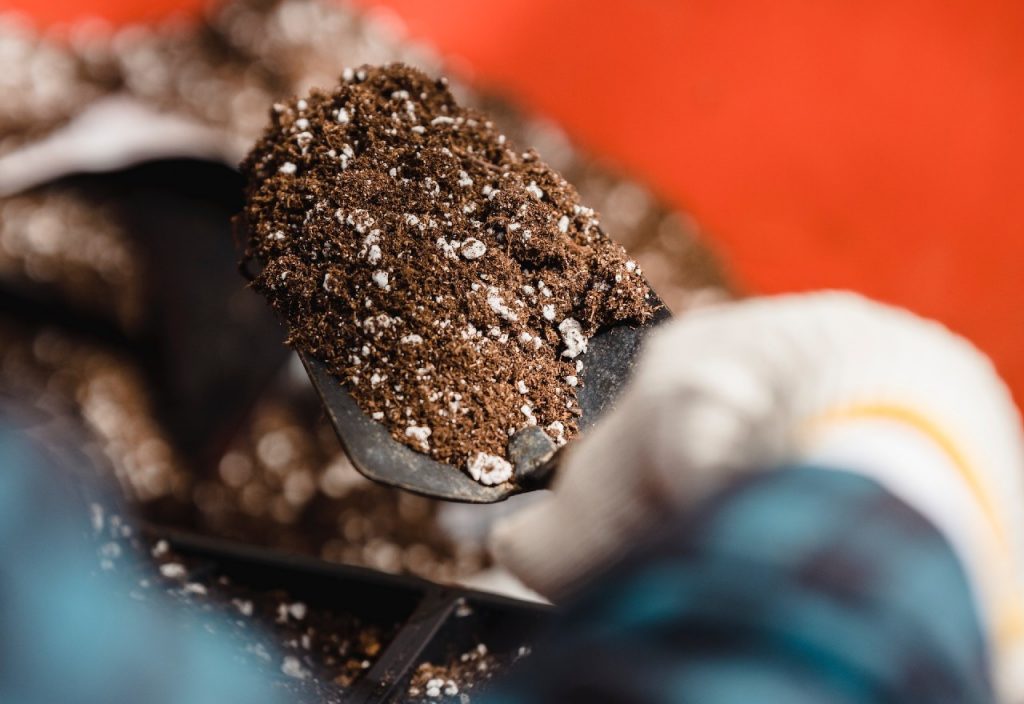ARTICLES - 19 July 2023
Crucial for nature and agriculture, nutrients are key elements for fertilizers. Researchers are fighting climate change and soil pollution, by recovering them from bio-waste, but experts warn: “Science is not enough. We need a cultural shift”
The Earth is a sick patient, struggling to survive and feed its inhabitants. Plagued by global warming and increasing pollution, our planet is facing climate change and depletion of its natural resources and it might soon fail to meet the food needs of a world population, expected to increase from 7 to 10 billion over the next 40 years. According to World Bank estimations, this year, 1 billion people had severe difficulty obtaining food and the 2022 Joint Child Malnutrition Estimates suggest that zero hunger targets for 2030 are moving further out of reach. Key for avoiding such a dramatic scenario are fertilizers, but as Ronald Vargas says, “It’s like when you go to the doctor: your physician would never prescribe you antibiotics every day, and it’s the same for soils. A moderate use of fertilizers can be helpful, but an excessive one will harm them,” argues the Secretary of the Global Soil Partnership, a mechanism established within the Food and Agriculture Organization of the United Nations (FAO), to promote sustainable soil management.
Nutrients such as nitrogen and phosphorus are crucial natural resources for life and agriculture, the “starting point of everything”, to put it like Vargas. Yet their dispersion in the environment leads to the invisible threat of air, soil, and water pollution, and to their very concrete and devastating impacts on biodiversity, climate change, and human health. “Soils are covered by asphalt in cities, and by crops and vegetation in more natural landscapes. We walk on them, but never actually look beyond the surface. And since people tend to value only what they have before their eyes, our very first challenge is to make the urgency of sustainable soil management visible.” In 2019, the European Environment Agency attributed 370,000 premature deaths in the European Union alone to the atmospheric emissions of nitrogen pollutants, and a 2022 scientific report estimates that nitrogen fertilizer production is responsible for more than 2% of total global climate emissions.
Reducing this environmental footprint is the main goal of B-Ferst, a European project which is now testing a wide range of bio-fertilizers, based on nutrient recovery and aimed at competing with the traditional fossil-based ones. “The nutrients we need are already here, are all around us,” says its coordinator, Javier Brañas Lasala. “We just need to recover and reuse them, but if we want this circular approach to be effective, we must ensure that our bio-based fertilizers are not more expensive than the traditional ones, otherwise nobody will ever choose them.” Hence, the challenge is to develop new technologies to make the recovery of phosphorus cheaper and more environment-friendly. “The whole process is usually very expensive and energy-consuming because it requires high temperatures and very expensive reagents. To cut both costs and energy consumption, we designed a reactor which allows us to benefit from the heat generated by the first reaction, to trigger the following ones, and to use much cheaper reagents,” he explains.
The target of Brañas Lasala and his colleagues is a recovery rate of raw materials from bio-waste of 20-30 %, without lowering the agronomic quality of the fertilizers. “This is why we are also developing microbial and non-microbial plant stimulants, aimed at improving the performance of the supplied nutrients,” he says. The scientific challenge is significant, but the goal is also to counter another consequence of nutrient overuse: their leaching into the soil. “More effective products will allow farmers to use smaller quantities of fertilizers, and this will reduce the risk of side-effects like soil imbalances or eutrophication”, a phenomenon affecting over one-third of European rivers and lakes and consisting in underwater life suffocation and loss of biodiversity, due to abnormal growth of algae.
“When we talk about pollution, we usually refer to air and water quality, but their natural interface is the soil. And if the soil is contaminated, the air will be polluted too,” warns Vargas, recalling that in its Global symposium on soil pollution, FAO stressed that “excess nitrogen inputs contribute to the release of nitrous oxide (N2O) into the atmosphere.” “N2O, coming from the overuse of nitrogen fertilizers, is even more dangerous than CO2 because it has a higher potential warming effect since it contributes even more significantly to the erosion of the ozone layer,” he explains. “To avoid this happening, the so-called nitrogen fixation, a process which is partly carried out by some crops, is crucial. This highlights the importance of ensuring sustainable management of soils.”
Nevertheless, the commercialisation of bio-products such as the ones developed within B-Ferst, has to go through an approval process, which is not fully harmonized yet within the European Union. Unanimously recognised as a turning point, a so-called “Fertilizing products regulation” recently extended the scope of a former 2003 regulation. “So far, it has been very complex to integrate raw materials from bio-waste. Now, this new regulation facilitates a more circular approach and ushers in the integration of a number of new different types of bio-waste,” comments Brañas Lasala. However, gathering the scientific data for them to be authorised is a huge task. “Thousands of different products such as plant bio-stimulants, compost, and manure, must be scrutinized one by one,” explains Daniel Traon, Managing Director of Arcadia International, a network of experts and consultants, providing policy evaluation and impact assessment studies on agriculture and food safety, especially for the European institutions.
It would now be urgent to expand this list as fast as possible, he says, but “it’s going to take a long time”. “The administrative process to get the products registration and approval is in place and the European Commission has started defining the ‘technical specifications’ of each of them, but we’ll have to wait at least one or two years to evaluate if the process works,” explains Traon. In the meantime, the European Commission has launched consultations for an initiative aimed at halving nutrient losses by 2030 and preserving soil fertility. Already anticipated in the Green Deal and the Biodiversity Strategy, the “Integrated nutrient management action plan” will also pursue the goals of reducing the use of fertilizers by at least 20%, ensuring a more sustainable application of nutrients, and preparing the markets for recovered and recycled nutrients. “The European Union is doing a lot, but a lot has still to be done especially in terms of raising awareness,” comments Vargas. “We can reduce the use of synthetic fertilizers and other agrochemicals, but what we need is first and foremost a ‘cultural shift’. There should be a growing awareness, that we face a global challenge, and that a profound change in our human habits is needed. People must understand that food is not grown in supermarkets but in our soils, and if our soils are polluted, so will be the food that they eat.”
Article by Diego Giuliani
Photo from Pexels by Greta Hoffmann



